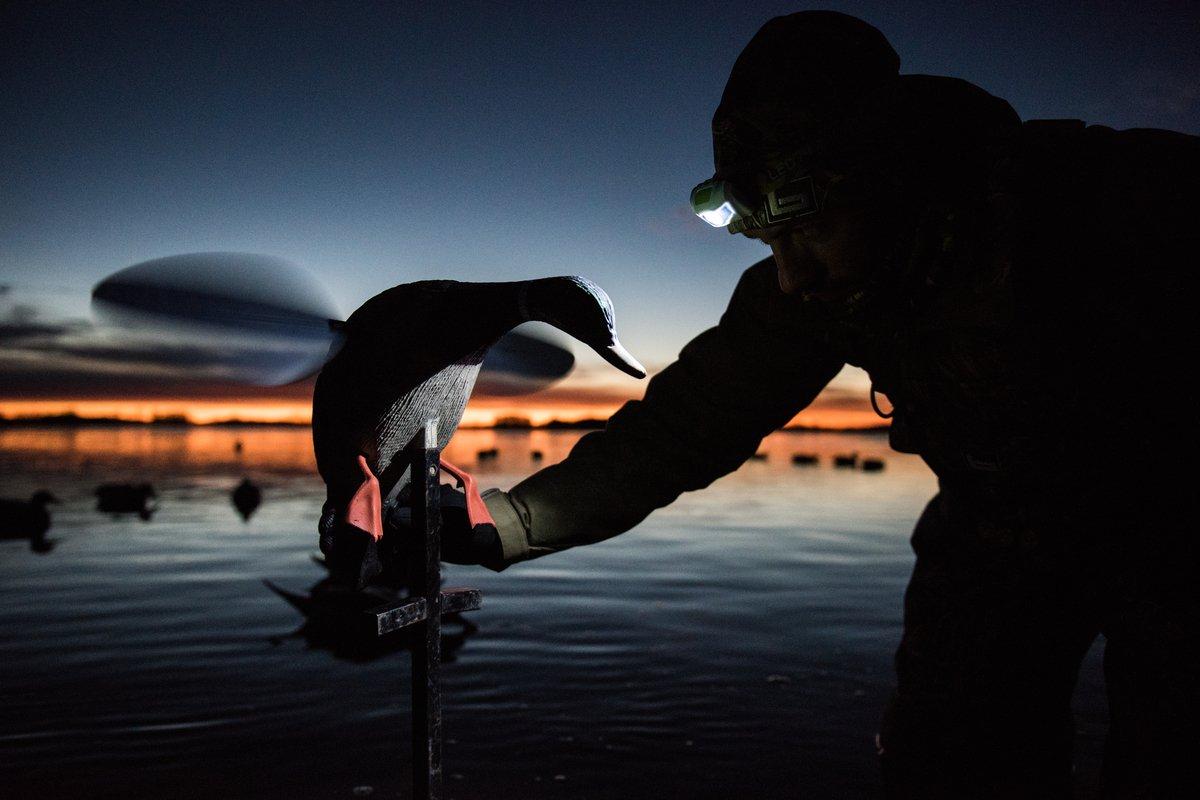You'll lure in more ducks and geese if your decoys move like the real thing. These options can help you this season
On days with wind and overcast skies, almost any decoy spread can lure in waterfowl. But for slower sits with flat water and bright skies, you need motion to attract birds. The idea of making decoys move isn't new, and it doesn't have to be complicated. Heck, guys still kick the water when hunting flooded timber to give their spreads a little life.
But you can also find a ton of modern options on the market. Although motion decoys were first considered gimmicks only used by a few hunters, most waterfowlers now use one at least a few times each season. Many won't leave home without them. Manufacturers add new devices each year, but they all have the same goal: to make your decoys move like real birds. Here's a look at nine decoy types that will boost the realism of your spread.
1. The Jerk String
The first motion decoy was the old-fashioned jerk string. The basic principle remains largely unchanged and is just as effective today: Connect a heavy anchor to a bungee cord, and then to a long string tied to a few decoys and attached to the cord. Pull the string against the anchor, and the decoys splash and make ripples. Give your spread some life without charging batteries.
2. The Flag
Flags offer another simple motion solution, though this trick doesn't disturb the water. They're usually used with a pole that varies from an arm's length to 10 feet or more. Flap the flag vigorously to look like wings, then slowly settle it to the ground to simulate landing birds. One flag can work, but a couple are better if you're hunting with buddies and you have multiple flags. Watefowlers primarily use flags for decoying geese in fields, but they'll also attract low-flying diving ducks.
3. Quiver Decoys
This is a more high-tech option that ripples the water during calm days, thanks to an internal weighted spinning device that wobbles the deke. They are available in two varieties: full-bodied models or half-bodied duck butts to imitate a dabbling bird. Quiver decoys are easy to charge and aren't overly bulky, making them a versatile option for various setups.
4. Spinning Wing Decoys
Spinners are probably the most popular motion decoys. At first glance, you might think their flashiness would flare birds, but they can be surprisingly effective, especially with young or unpressured ducks. The wings alternately flash the dark topside with the white underside, giving the appearance of a backpedaling duck. In the right situation, they attract attention from long distances, and finishing ducks frequently land near the spinner.
Spinners have some drawbacks, though. On a soft, mucky bottom, you'll need a long pole to mount the decoy. In deeper water, or if the bottom is really soft, you might not be able to use them at all. They are also a little bulky to carry, and you'll need to keep the batteries charged. Losing wings puts you out of business.
But newer models are less hassle, and include features like magnetic wings that are much easier to install than the old styles that used thumb screws. They're also easier to charge, and accessing the batteries is easier. Although pricey and bulky, spinners are worth the operating hassle.
Just pay attention to your local regulations. Some states or wildlife refuges don't allow motorized spinning-wing decoys. Wind-driven spinners, which turn at the slightest breeze, get around those regulations. Of course, you need wind for them to work. Otherwise, you're stuck with a lifeless duck on a pole.
5. LED Wing Decoys
Using lights instead of motorized spinners provides another way around some spinner restrictions. These decoys look a lot like spinning-wing decoys: They consist of a duck body with outstretched wings mounted on a pole. But the wings don't spin. Instead, white lights flash on and off to mimic the flash of the underside of wings.
6. Tornado Decoys
Although many motion decoys are designed primarily for ducks, rotary-style tornado decoys are great for snow geese when you need large spreads and lots of movement. These machines elevate everything from simple sock decoys to spinning-wing models and let you run multiple decoys concurrently. That gives the impression of a flock circling and preparing to touch down. This system is overkill, bulky and expensive for hunting small wetlands, but it's perfect for a large snow goose spread, where the mantra is often go big or go home.
7. Carousel Decoys
Carousel decoys also impart movement to several decoys at once. These floating units consist of two to four decoys spinning on a carousel in the water. Motorized spinning feet propel the carousel in a circle, and some units even splash water. It's a great way to imitate a flock of swimming ducks.
8. Splashing Decoys
Splashers generate movement and kick up water, usually by using spinning feet or wings that hit the water and make it spray. Some decoys use pumps or jets to spray water or propel the decoys. These full-bodied decoys can be used with a remote control and produce highly realistic swimming movements.
9. Tip-Up Decoys
Tip-up feeding dekes have a rotating head that revolves through the body of the deke. As it does so, it makes the buoyant body tip like a dabbling mallard. You can also position the power cord to prevent the head from rotating through the body, which gives the decoy a permanent submerged dabbling movement, providing constant ripples for your spread.
Click here for more Realtree waterfowl hunting content. And check us out on Facebook.








